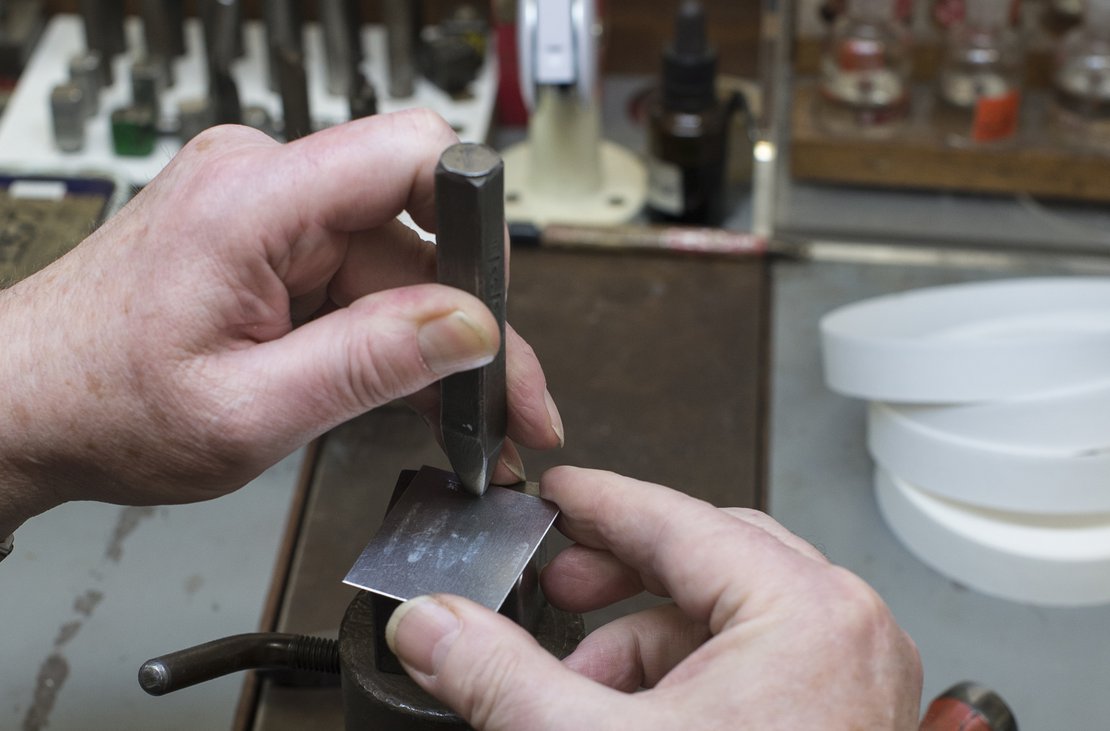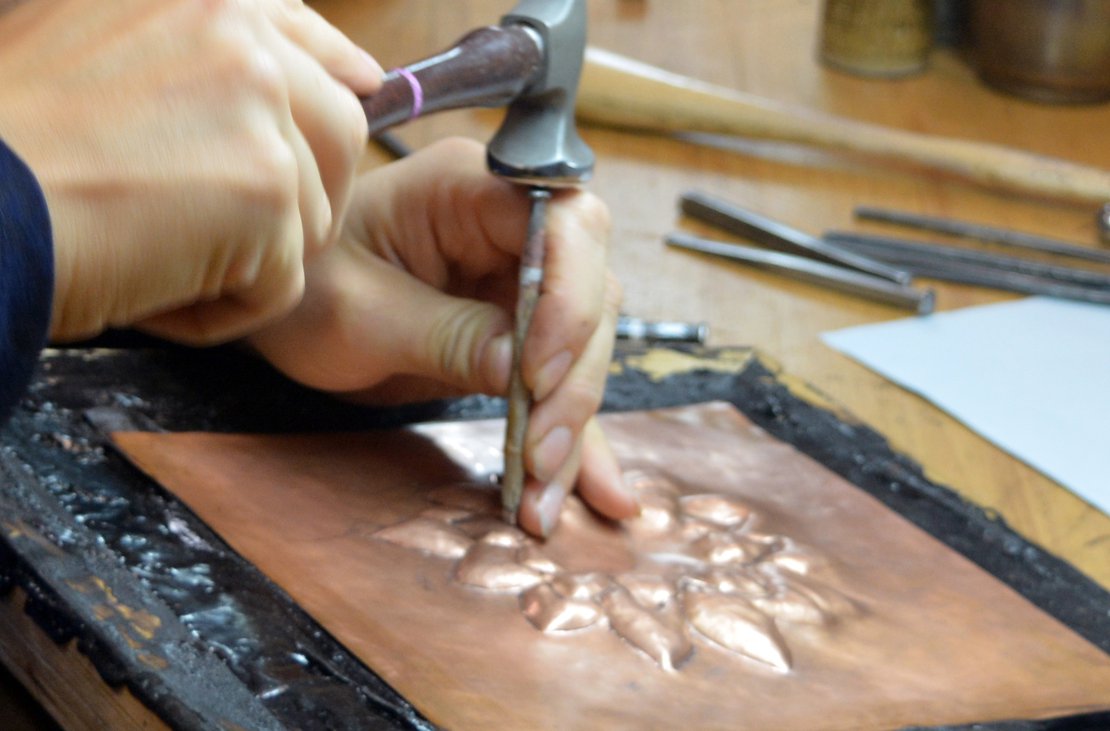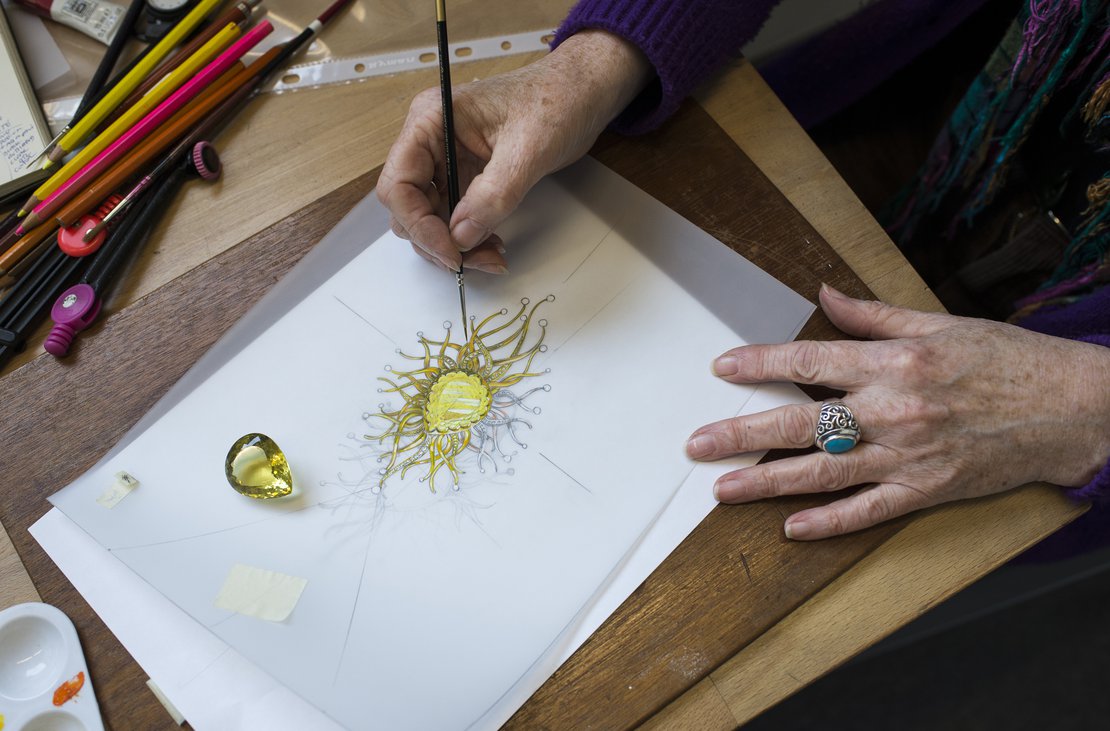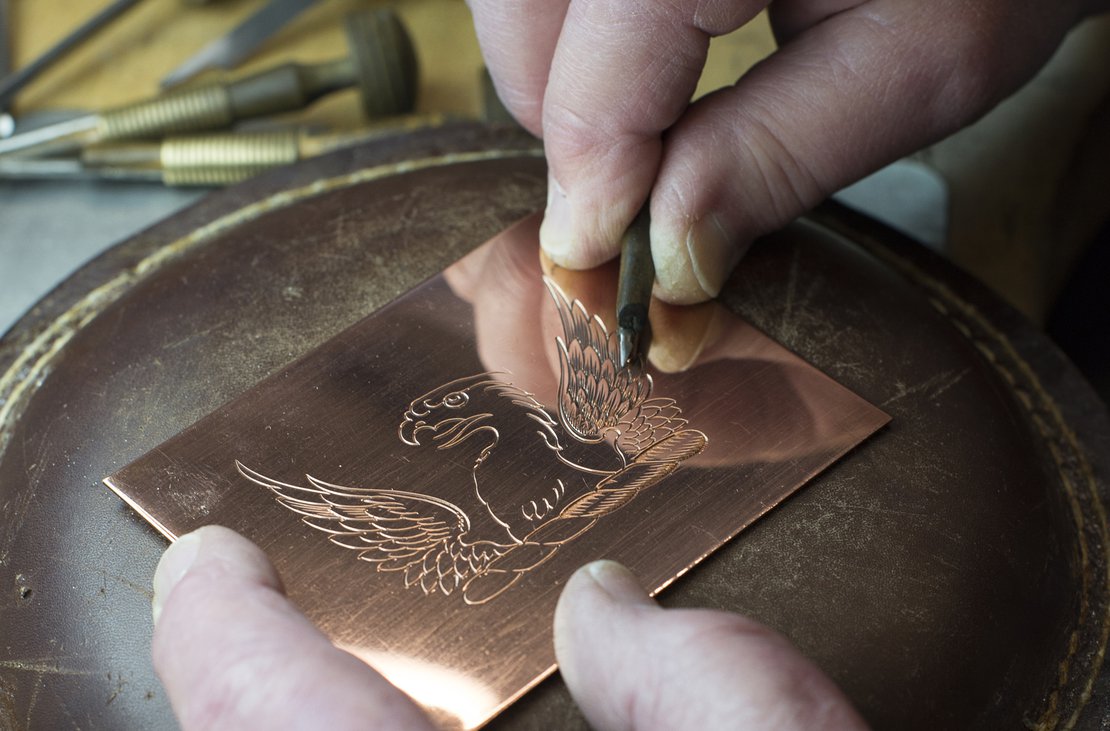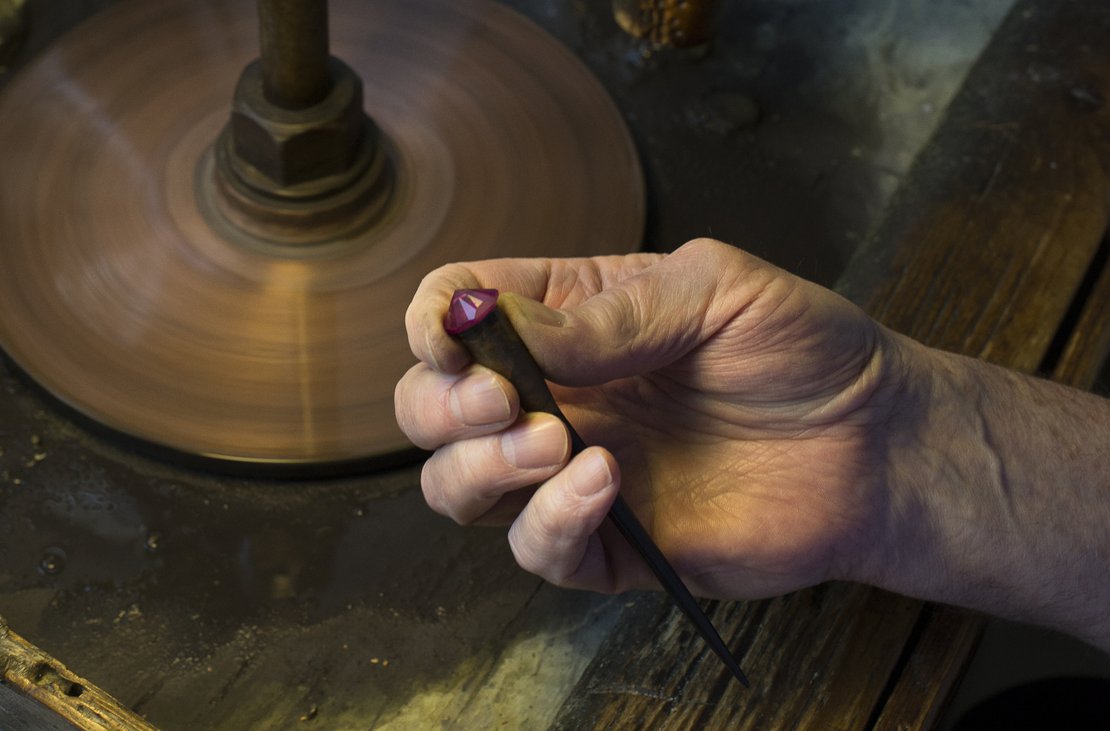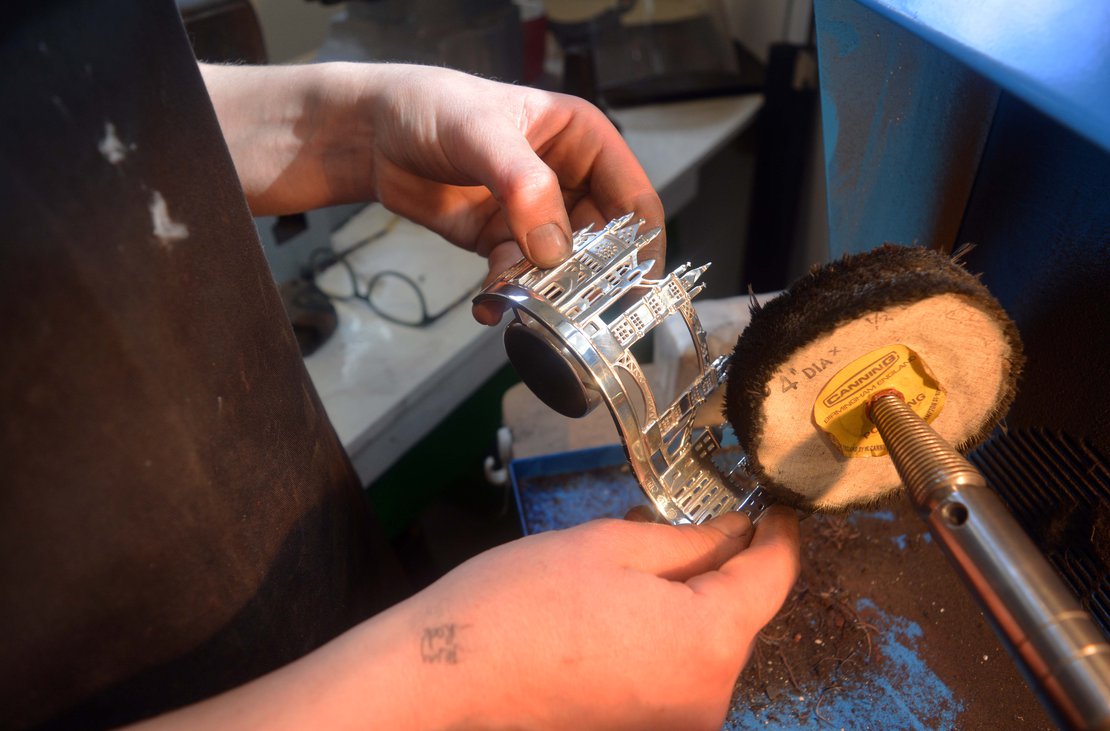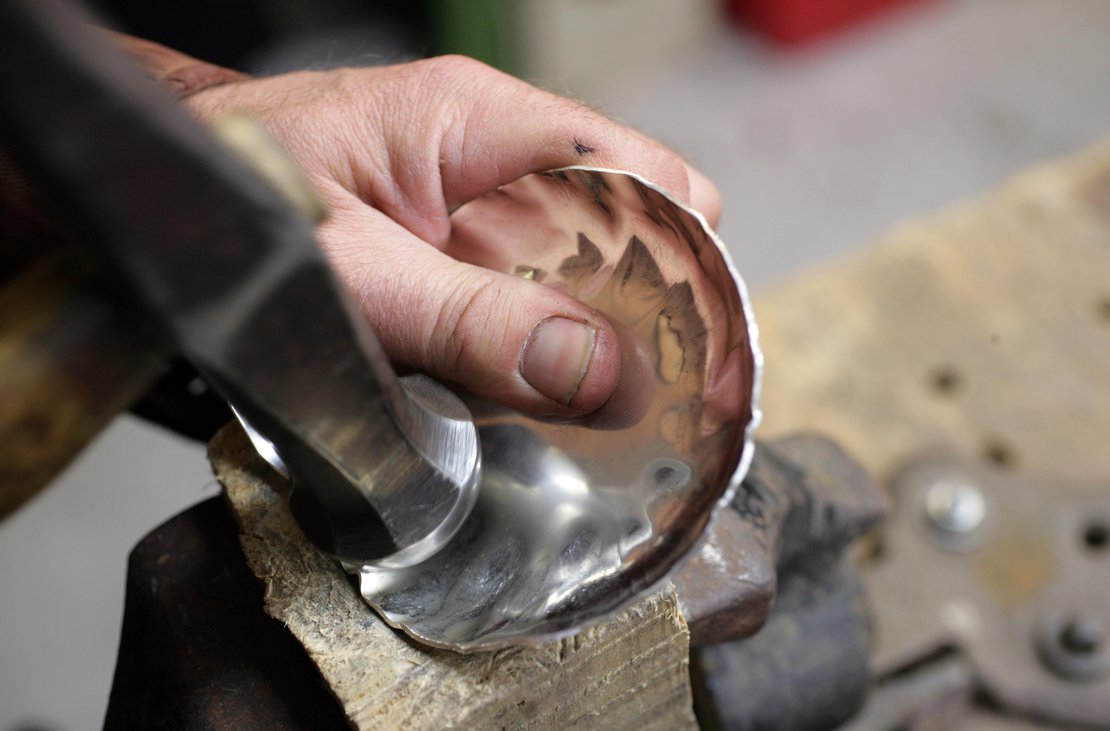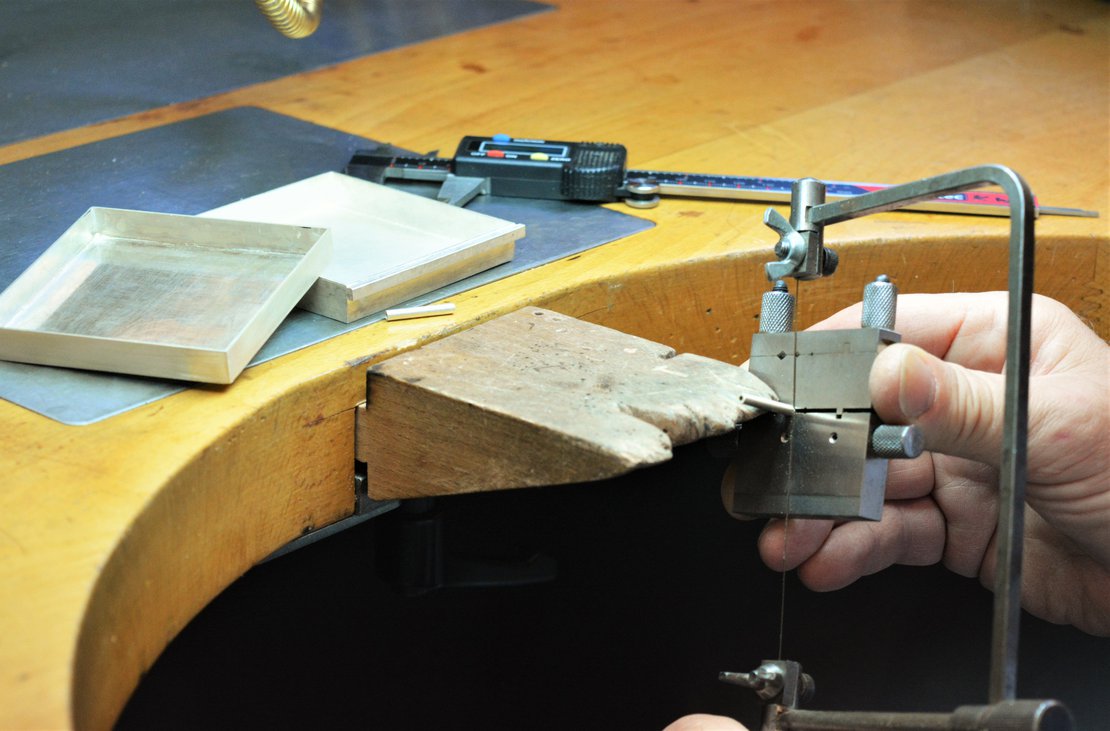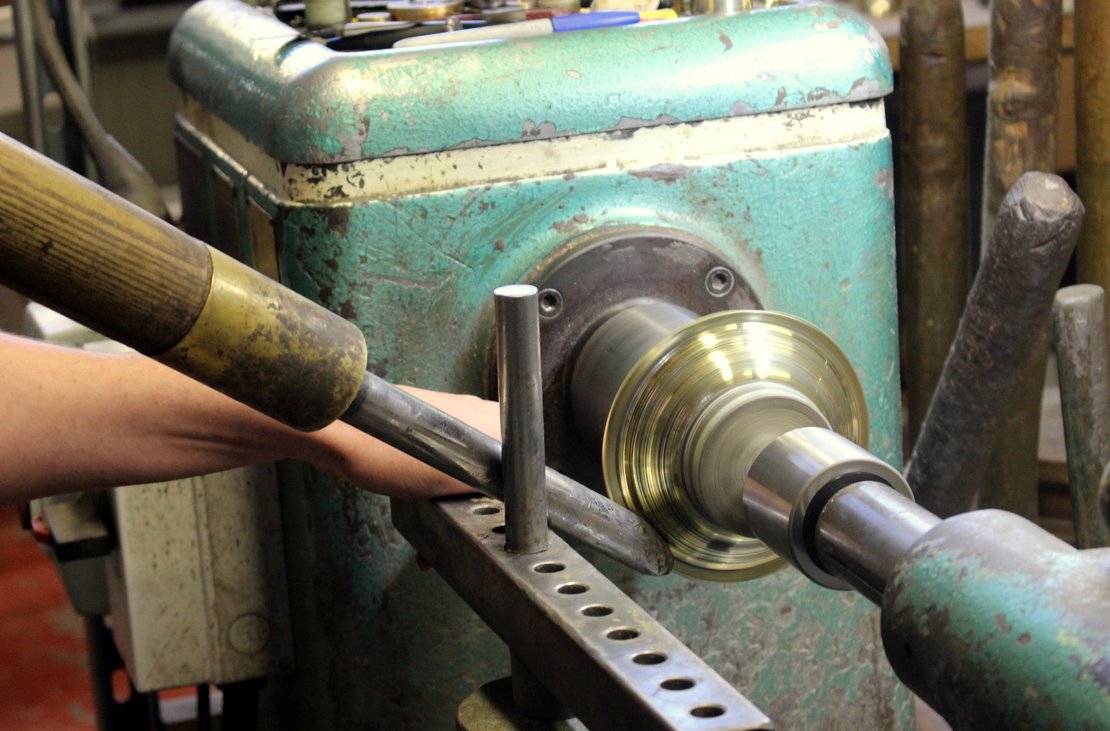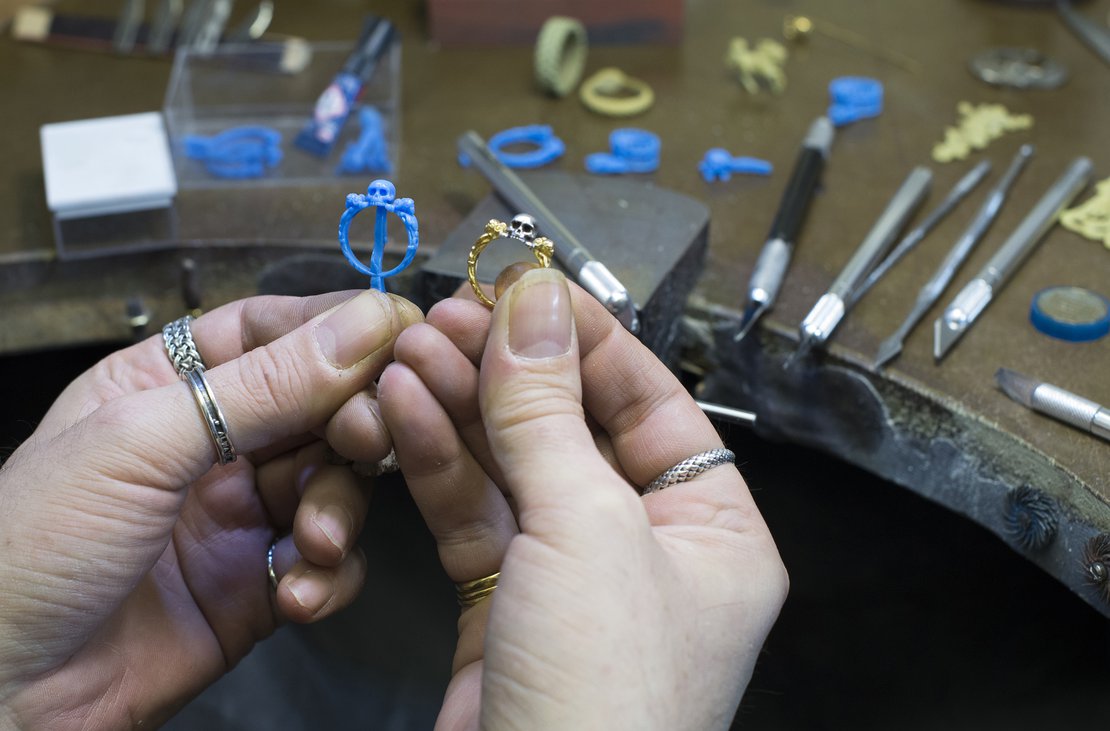Setter
Setters specialise in fixing precious and semi-precious gemstones into various items of jewellery, accessories and silverware using a range of setting and carving techniques.
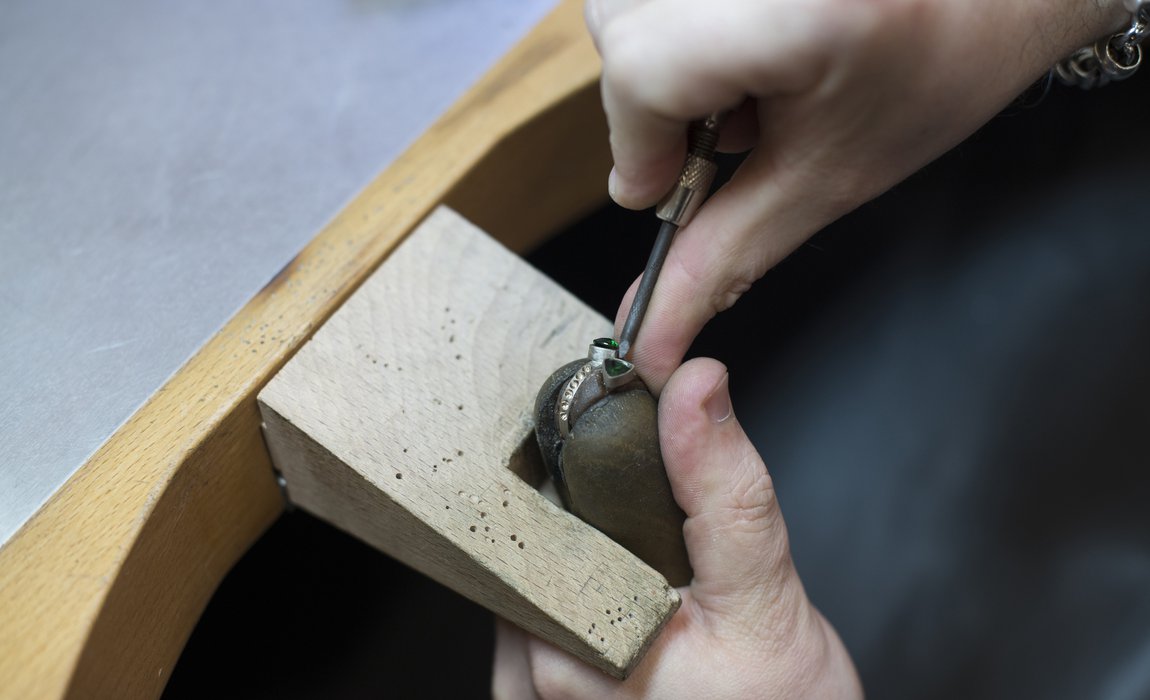
Setters are responsible for securing the gems into the mounts created by a diamond mounter (jeweller). The setting chosen will depend on the gem, its size, cut and the effect required for the finished piece. There are various types of settings including prong (or claw) setting, rubover setting, pavé setting and gypsy setting. Setters may choose to specialise as either a gem setter, diamond setter or work as both.
“Gemstones are measured using Moh’s Scale of Hardness which compares stones by observing which minerals can scratch others. On Moh’s Scale of Hardness amber is the softest gemstone and diamond is the hardest.”
What personal attributes are useful for a setter?
To be a setter you need to be:
- Interested in working with gems
- Have very good eyesight or be able to work for a prolonged period using a microscope
- Good at working with your hands
- Able to work on a small scale
- Patient, methodical, precise and accurate
- Trustworthy and reliable – you will be dealing with expensive material and other people's work
- Able to follow instructions from plans
- Creative with good communication skills – especially if you are producing your own designs
Highly skilled setters need to be very precise and will know how to select the right specialist tools for each job. Many setters will have a background in gemmology as it will allow them to better understand the properties of the different stones they are working with and to be able to guide clients on suitable setting types. For example, knowing that emeralds are more brittle than diamonds will influence the type of settings that can be used. Setters will also spend time studying work by other craftspeople and historic examples in museums or galleries.
What will my working life be like as a setter?
A setter will work from a work bench in a studio or workshop. As a setter you may be working for a company or be self-employed. If you work for a company you are part of a bigger team, earn a wage and have a fixed working schedule, normally from Monday to Friday.
If you are self-employed you may have a workshop at home or shared with other craftspeople. You are also more likely to engage with customers to create bespoke pieces or you might be approached by a company or an individual to create their designs. Alternatively, you might decide to produce and sell your own pieces. Designer-makers can either sell their pieces through a gallery or retail space or they might decide to sell them directly to customers at craft fairs for example. In this case you will need to develop good business, finance, marketing and interpersonal skills.
Within your work you must be able to adhere to industry health and safety requirements; understand the safe storage, handling and disposal of harmful materials used in the workshop; know how to safely operate and maintain your machines and tools and learn how to adequately process your materials.
You will find it useful to maintain a working knowledge of the appropriate styles of setting suitable for historical gemstones; a comprehension of a wide variety of setting processes; an appreciation of the value of the materials involved and the financial aspect of the setting process; basic knowledge of hand engraving; a knowledge of gemmology including the ability to identify a wide range of precious and semi-precious gemstones through colour, material composition and cut of facets.
As a setter you will use skills and techniques including setting items in accordance with drawn, verbal or written Instructions to the dimensions given; applying relevant setting skills and manufacturing techniques and using the material supplied; the creation and maintenance of a comprehensive set of setting tools; the interpretation of a given design onto a prepared piece of jewellery, silverware or accessory to enhance its effect; use various methods to secure each piece; be able to adjust settings to all shapes and sizes of gemstones; be able to secure all shapes and sizes of gemstone by whatever method the style of setting requires; carving techniques and be able to enhance the mount using polishing processes.
You can expect to work with all carats of gold, silver, copper and platinum. And you will learn how to use tools including Personal Protective Equipment; hand tools; bull stick; half round stick; spitz stick; flat stick; burnisher; Carborundum and Arkansas Stones; wax stick; ring clamps; GRS tools; optivisor; steel and copper pushers; loupe; Dixieme Gauge; and burrs. You should receive training in all of these as required.
A day in the life of a setter - Harry Buckett
 Make tea.
Make tea.
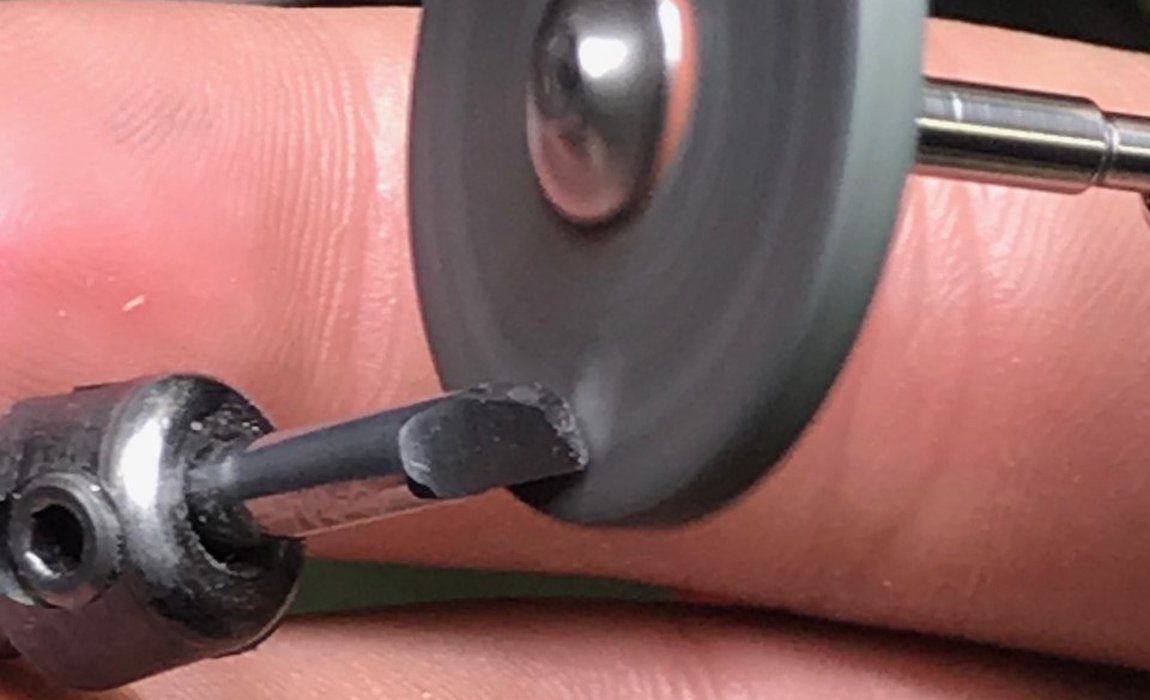 Sharpening tools ready for a day's work.
Sharpening tools ready for a day's work.
 Working at the bench.
Working at the bench.
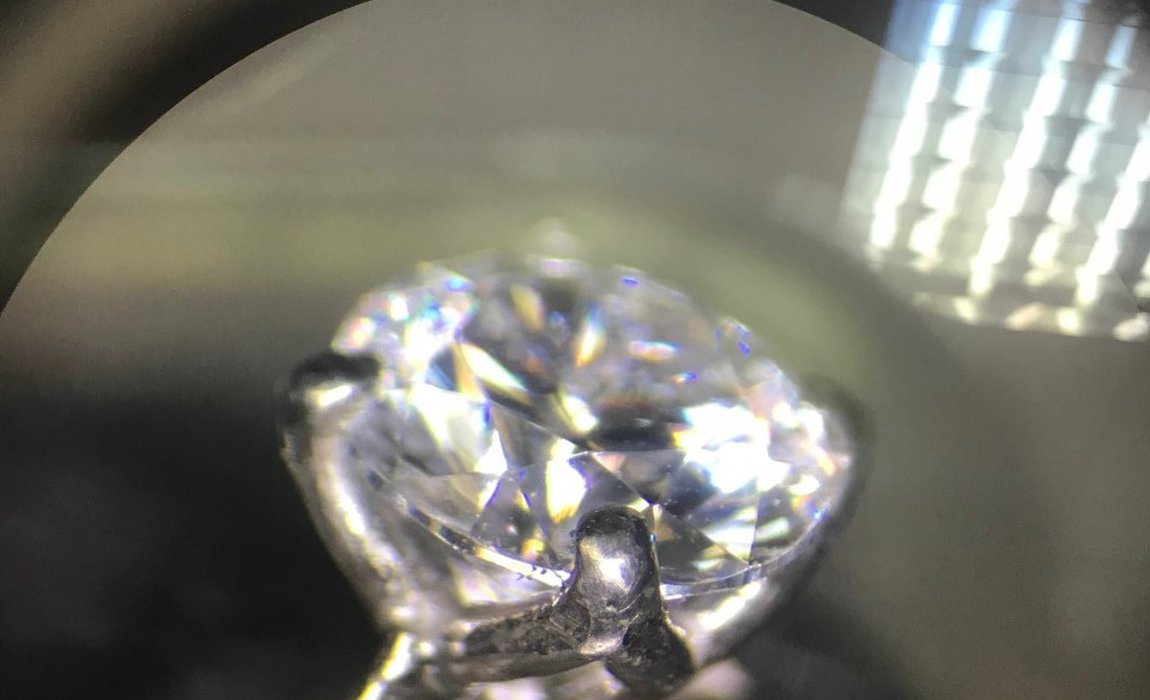 Centre stone through a microscope.
Centre stone through a microscope.
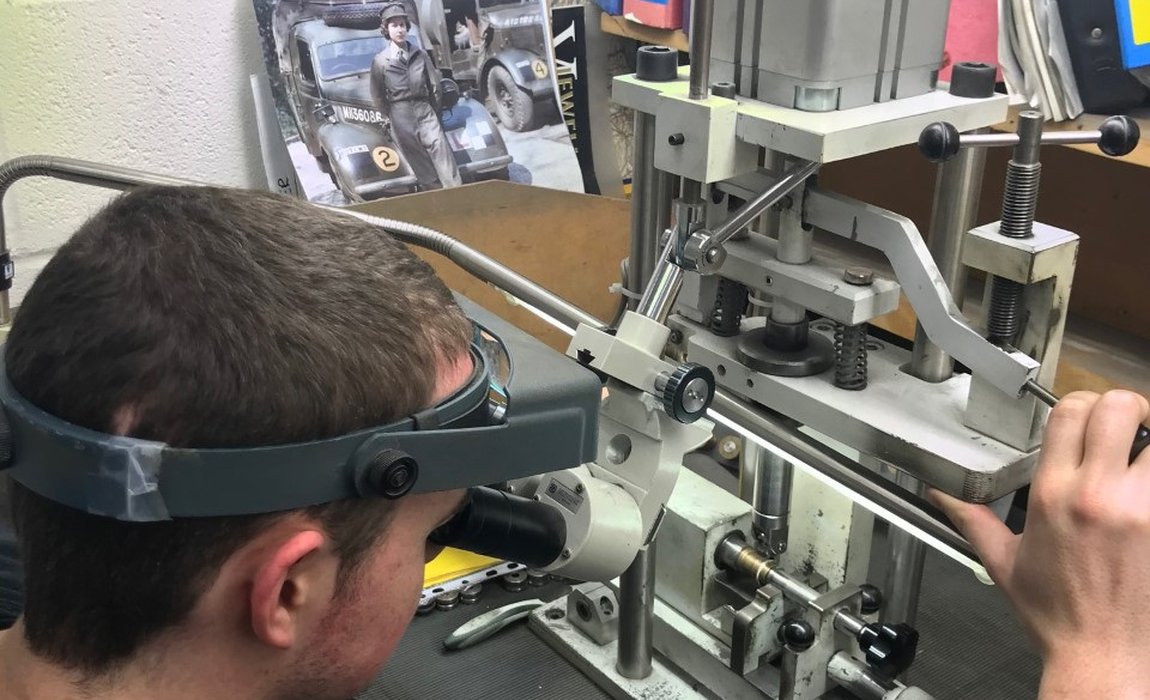 Using specialist equipment for machine setting
Using specialist equipment for machine setting
 Giving completed work to our polisher.
Giving completed work to our polisher.
Training or qualifications: How can I become a setter?
There are no specific qualifications to become a setter. Typically, setters will pursue an apprenticeship or on the job training. If you want to design, make and set your own jewellery you might pursue a general jewellery course and complement it with practical experience. Practical training is essential whether you complete an apprenticeship or a degree course.
There are several ways to start out in the jewellery, silversmithing and allied industries. To become trained as a setter you may choose to go straight into a job, apprenticeship or relevant course at a college, university or training centre. There are very few skill-specific qualifications available, but many courses provide an introduction to a range of creative skills. To find out more about different options and your potential route into a creative career within the goldsmithing industry click here.
What can I earn as a setter?
As an apprentice or someone who is training you should be paid at least the National Minimum Wage for your age and this rate should increase as you get closer to completing your training. Apprentices undertaking traditional training may start out earning around £12,000 – £13,000 per year and be closer to £17,000 – £18,000 at the end of their four-year apprenticeship. Once you have completed your training your earnings will vary depending on your skill and employment status.
Generally, diamond setters are likely to earn a higher amount due to the quality and cost of the materials they are working with. The materials used by gem setters are less precious meaning that their prospective wages may be lower. Micro-setters have good earning potential if they manage to develop high-quality setting skills and speed.
Salaries for an employed setter can start at around £22,000 - £25,000 per year in the first few years after training. This can rise to £35,000 - £45,000 for mid-career setter and can reach £60,000 for the most experienced and skilled setters working for a top company.
If you are self-employed, being a setter can be well paid if you have regular clients or constant sources of work, but it can be difficult if you only receive work on an ad hoc basis. As a self-employed setter you are reliant on other craftspeople or clients to supply you with work and you will normally charge per stone. Rates for this will depend on your experience, the preciousness of the stones being set, their size, the type of setting required and the type of work you are setting in to. Breaking stones is an occupational hazard and it will be down to you to agree who is reliable for the cost of broken stones; you or the client. No matter how you work your reputation is extremely important as the goldsmithing industry often operates on word of mouth recommendations and trust.
What industry membership bodies can I join?
The Goldsmiths’ Centre offer a range of membership options for people at different stages of their career. Joining a membership body or keeping up to date with industry events allows you to create a network with like-minded individuals. They might also run workshops to acquire new skills. See for example:
Meet the makers
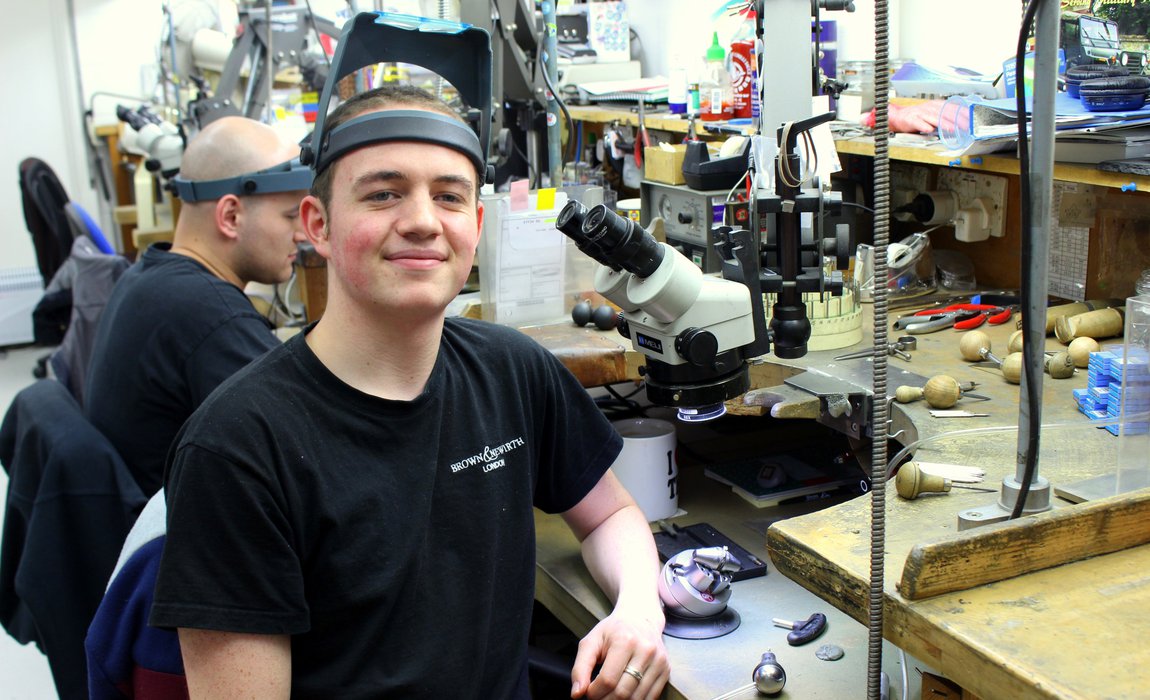
I found I connected with stone setting right away. Not because I was the best or the quickest at it, but just because I enjoyed it and it spoke to me on a personal level. I knew right away it was something I wanted to learn and become skilled at.
Examples of setting
The Goldsmiths’ Company Collection includes over 8,000 pieces of antique, domestic & contemporary silver, jewellery and art medals which were made in Britain between 1350 and the present day. The Company continues to purchase, and commission pieces each year and new contemporary pieces must demonstrate innovative design combined with excellent craftsmanship. Pieces are acquired from both established craftspeople and rising stars.
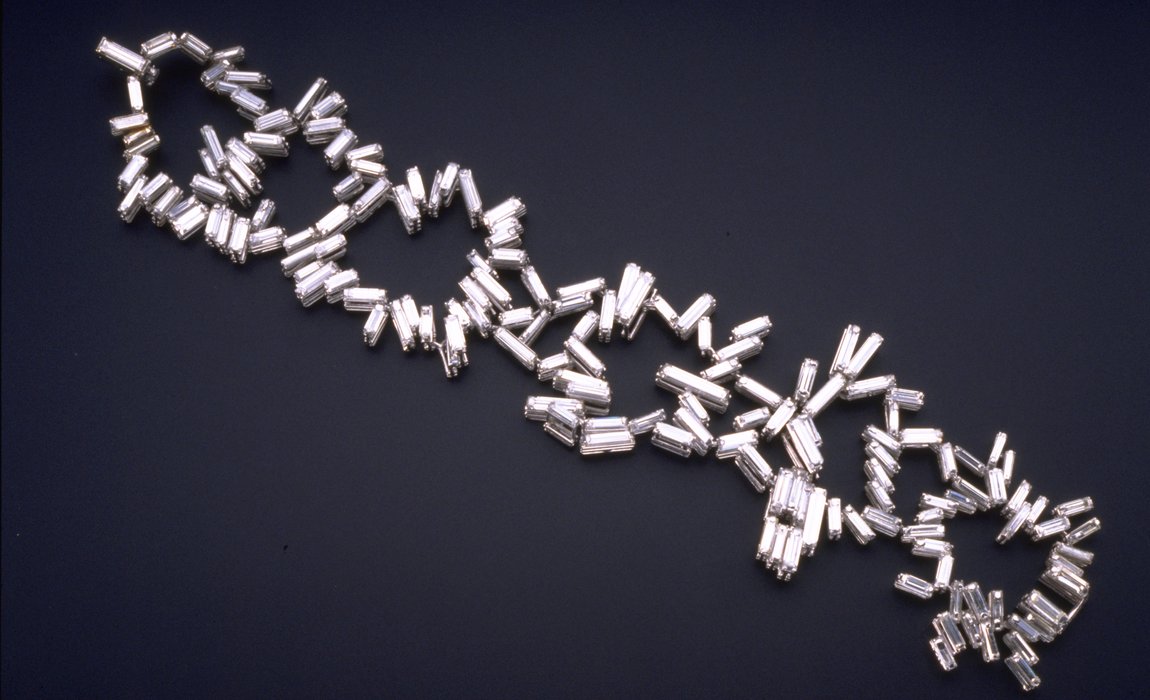 Roger King, Bracelet, c.1961 © Collection: The Worshipful Company of Goldsmiths
Roger King, Bracelet, c.1961 © Collection: The Worshipful Company of Goldsmiths
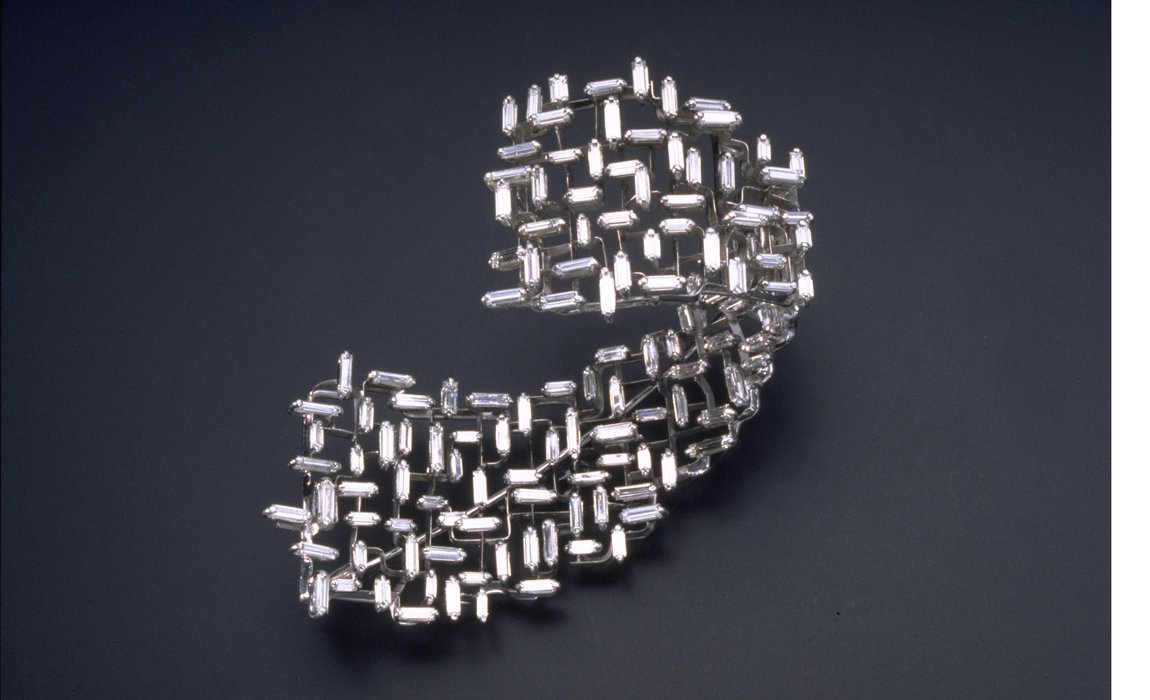 Andrew Grima, Brooch, c.1964 © Collection: The Worshipful Company of Goldsmiths
Andrew Grima, Brooch, c.1964 © Collection: The Worshipful Company of Goldsmiths
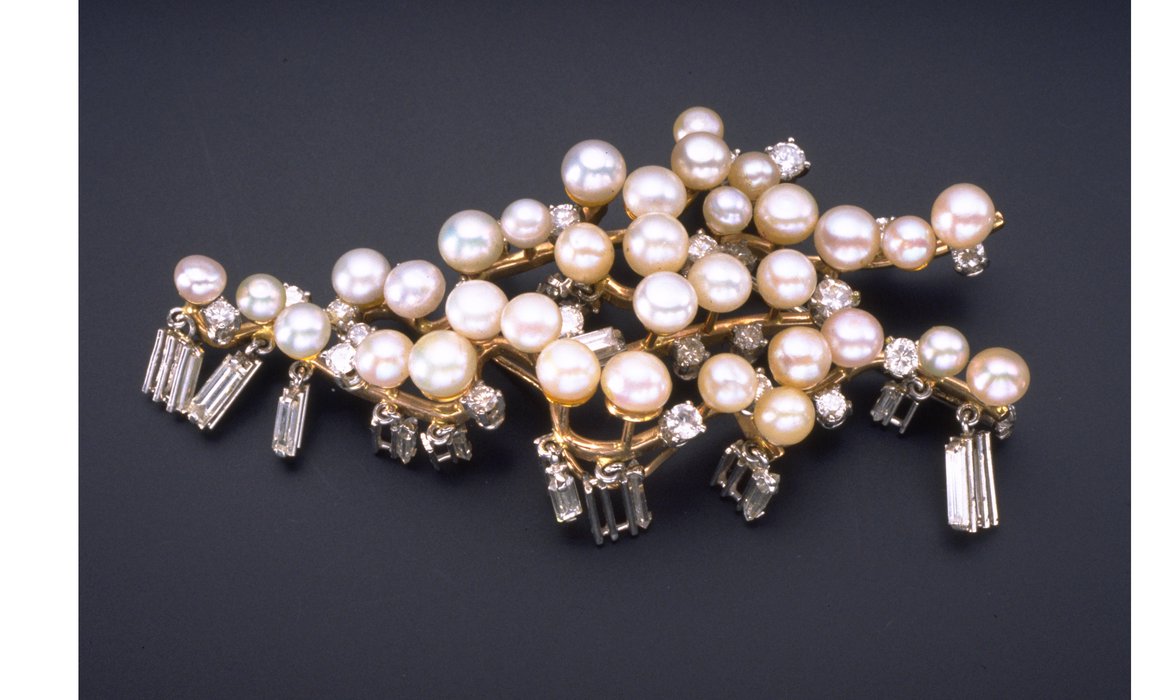 Roger King, Brooch, c.1963 © Collection: The Worshipful Company of Goldsmiths
Roger King, Brooch, c.1963 © Collection: The Worshipful Company of Goldsmiths
 John Donald, Brooch, 1963 © Collection: The Worshipful Company of Goldsmiths
John Donald, Brooch, 1963 © Collection: The Worshipful Company of Goldsmiths
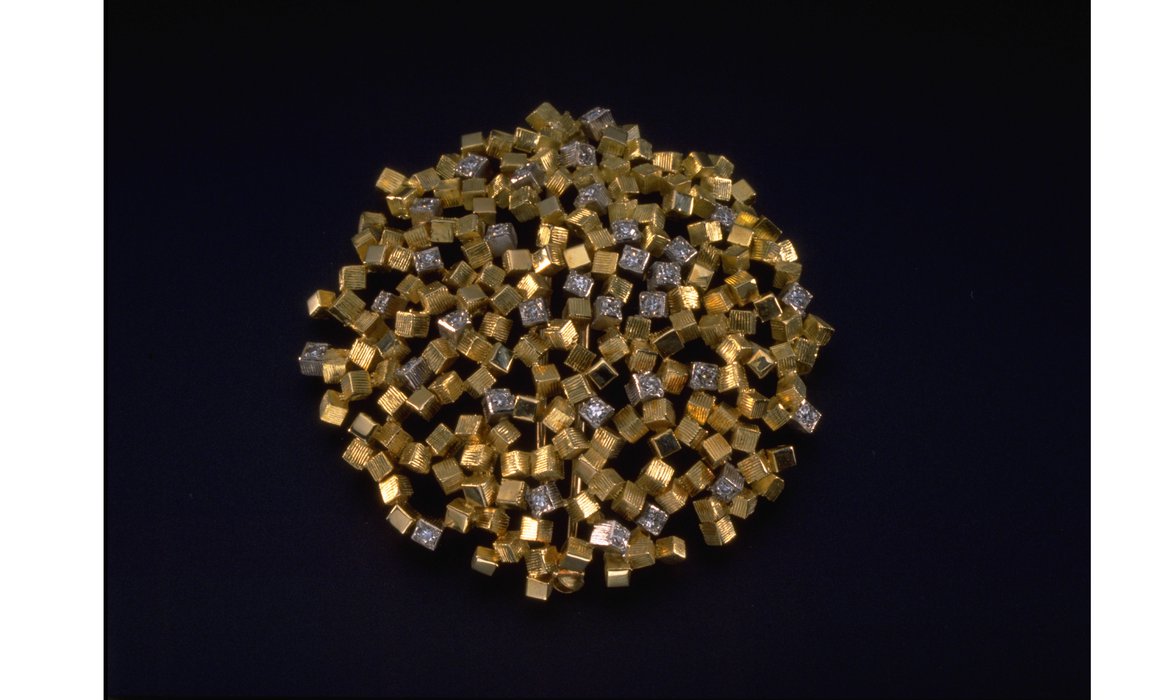 John Donald, Brooch, 1963 © Collection: The Worshipful Company of Goldsmiths
John Donald, Brooch, 1963 © Collection: The Worshipful Company of Goldsmiths
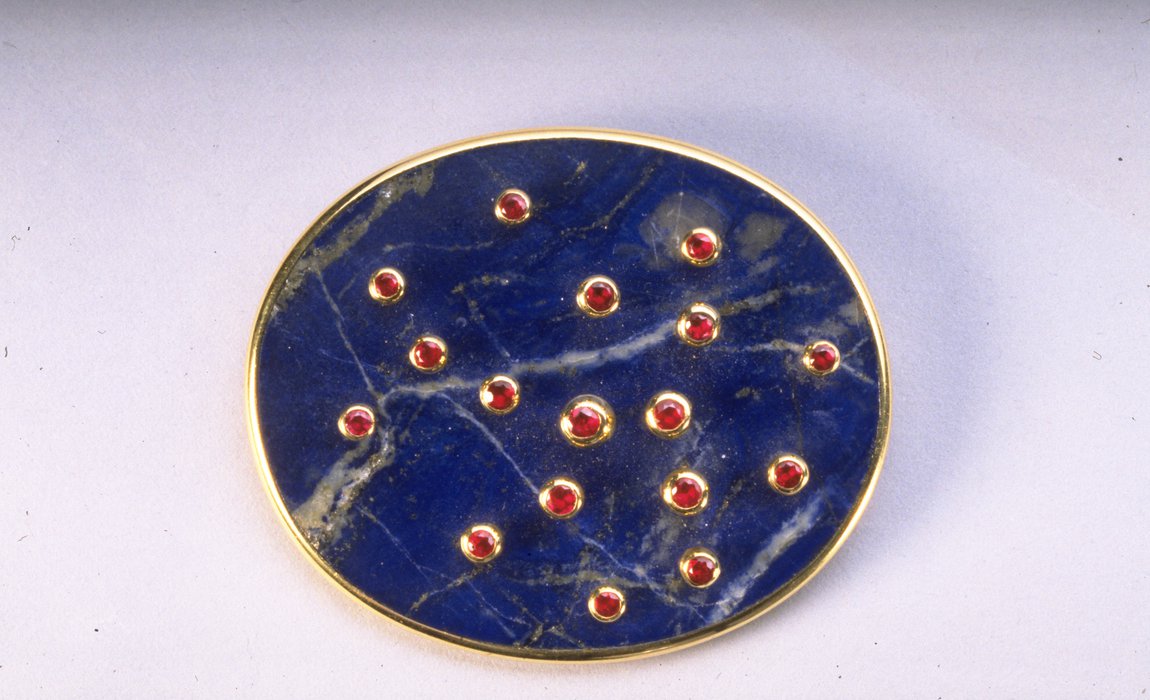 John Donald, Brooch, 1971 © Collection: The Worshipful Company of Goldsmiths
John Donald, Brooch, 1971 © Collection: The Worshipful Company of Goldsmiths
 John Donald, Brooch, 1963 © Collection: The Worshipful Company of Goldsmiths
John Donald, Brooch, 1963 © Collection: The Worshipful Company of Goldsmiths
Further information
There are many reputable sources of information relating to the jewellery, silversmithing and allied industries. Whether you are trying to find information on technical skills, processes, materials, makers or inspiration some resources relating to setting can be found below:
The Goldsmiths’ Company Library relates specifically to gold and silversmithing, jewellery, assaying and hallmarking, precious metals, and the City of London and its guilds. The Library includes 8,000+ books and 15,000+ images, magazines, periodicals and journals, technical guides, films, special research collections, design drawings produced during the early and mid-twentieth century by British or UK-based craftspeople and subject files on a wide range of industry related topics. The Library is also responsible for the Company’s archives, which date back to the 14th century.
Setting related books and archival materials include:
- Sonia Cheadle, Design and make: mounting and setting stones, London, A & C Black, 2010
- John Cogswell, Creative stonesetting, London, A & C Black, 2008
- Melissa Hunt, Stonesetting for contemporary jewellery makers, London, Search Press Ltd, 2013
- Proceedings of the Santa Fe Symposium on Jewelry Manufacturing Technology, Albuquerque, Met-Chem Research Inc., 1987-1991 and 1995-present
- Anastasia Young, The Guide to Gemstone Settings: Styles & Techniques, London, Bloomsbury Visual Arts, 2016
- Walter Zeiss, Setting of Gemstones, Stuttgart, Rühle-Diebener-Verlag, 1984
